The crypto market has shown resilience and innovation, with Bitcoin (BTC) prices recovering and Ethereum (ETH) gaining ground. The approval of spot Ethereum ETFs in the U.S. has led to a significant outflow of ETH from centralized exchanges, signaling a potential supply squeeze.
Kaspa emerges as a potential game-changer in the crypto space, promising to address the perennial issues of scalability and confirmation times that plague traditional blockchains.
Key Areas Covered
- Foundations of Kaspa
- Comparison with traditional blockchain technology
- Scalability and speed
- Kaspa’s potential impact on the crypto market
Understanding Kaspa’s Foundations
What is Kaspa?
Kaspa is a cryptocurrency that implements the GHOSTDAG protocol, offering a blockDAG structure for parallel block processing and rapid transaction finality. It stands out for its ability to handle high block rates and virtually instant transactions without compromising security.
Unique Features of Kaspa
- GHOSTDAG Protocol: A generalization of the Nakamoto Consensus to a Directed Acyclic Graph of Blocks (blockDAG), allowing for high block rates and instant transactions.
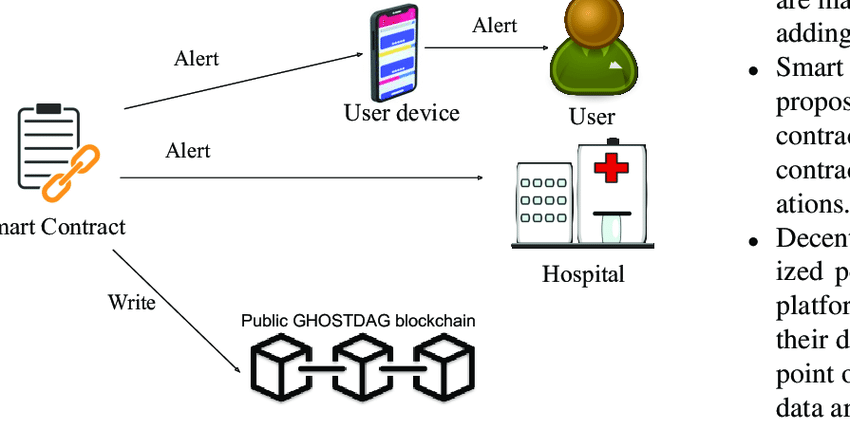
Simplified GHOSTDAG Diagram Explanation:
- Blocks: Each box represents a block containing transactions.
- Blue Line: The blue line indicates the “main chain” or the selected path with the most accumulated work (mining effort).
- Grey Lines: Grey lines represent alternative paths or “side chains” that were not chosen for the main chain but are still part of the GHOSTDAG structure.
- Arrows: Arrows indicate the direction of block creation and the flow of the GHOSTDAG protocol.
- BlockDAG Structure: Unlike traditional blockchains, a blockDAG orders all blocks in parallel within consensus, which permits extremely high block rates.
Kaspa vs. Traditional Blockchain Technology
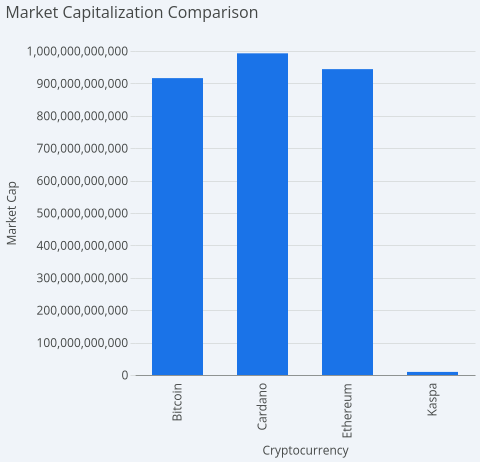
Kaspa’s DAG-based structure offers significantly higher scalability and transaction speeds compared to traditional sequential blockchains.
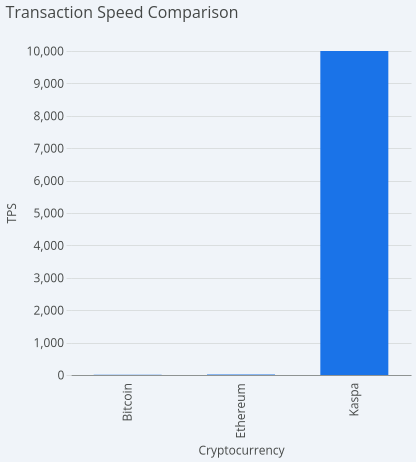
The Problem Kaspa Solves
Traditional blockchains face limitations such as scalability and slow confirmation times. Kaspa’s innovative technology addresses these issues by enabling up to 18 blocks in parallel, leading to minimal confirmation times and enhanced throughput.
Kaspa’s Key Features
Technical Aspects
- GHOSTDAG Protocol: Kaspa’s GHOSTDAG protocol is a generalization of the Nakamoto Consensus to a Directed Acyclic Graph of Blocks (blockDAG), which allows for high block rates and instant transactions.
- BlockDAG Structure: The blockDAG structure enables parallel processing of blocks, leading to a significant increase in throughput and reduced confirmation times.
- Proof of Work (PoW): Kaspa uses a PoW consensus mechanism, which is a time-tested method to secure the network and prevent double-spending.
Benefits
- High Throughput: Kaspa can handle a large number of transactions per second, thanks to its blockDAG structure.
- Fast Confirmations: Transactions on the Kaspa network are confirmed quickly, dominated by internet latency rather than network limitations.
- Security: The PoW consensus mechanism, coupled with the GHOSTDAG protocol, provides robust security against attacks.
Kaspa’s Team and Community
Core Developers
- Yonatan Sompolinsky: Co-founder of DAGLabs, holds a postdoctoral degree in Computer Science from Harvard University.
- Michael Sutton: Master’s degree in Computer Science from The Hebrew University, contributes as a skilled distributed systems researcher3.
- Elichai Turkel: Applied cryptographer and high-performance systems developer.
Community’s Role
The Kaspa community, comprising developers, researchers, and enthusiasts, plays a crucial role in decision-making and project development, embodying the decentralized ethos of the network.
The Kaspa Ecosystem
Kaspa Mining
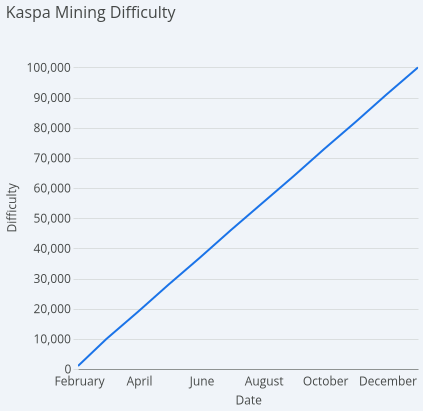
- Algorithm: Kaspa uses the kHeavyhash mining algorithm, which is computationally intensive and supports dual-mining with other cryptocurrencies.
- Getting Started: Miners can participate using GPUs, and various mining software solutions are available for both single and dual-mining.
Kaspa Wallets
- Types: Kaspa wallets are available in desktop, mobile, web, and hardware forms, catering to different user preferences.
- Secure Storage: Users should choose wallets based on usability, security, and features to securely store their Kaspa coins.
Kaspa Exchanges
- Trading: Kaspa is traded on several exchanges, including MEXC Global, CoinEx, TradeOgre, XT.COM, and DigiFinex.
- Buying and Selling: To buy or sell Kaspa, users can transfer funds to these exchanges, trade KAS for fiat or other cryptocurrencies, and use secure wallets for storage.
Kaspa’s Potential Impact
Kaspa’s Use Cases
Beyond mere payment transactions, Kaspa’s technology is poised to support a variety of applications:
- Smart Contracts: Kaspa’s smart contracts are designed to be adaptable and efficient, suitable for a range of decentralized applications (dApps) and blockchain initiatives.
- Decentralized Apps (dApps): With its high throughput and fast confirmations, Kaspa can support complex dApps, potentially transforming sectors like supply chain management and digital identity verification.
Kaspa and the Future of DeFi
Kaspa’s role in decentralized finance (DeFi) could be significant due to its:
- Scalability: Addressing the scalability and speed challenges of traditional blockchains, Kaspa can facilitate faster and more affordable decentralized transactions.
- Interoperability: The introduction of wrapped Kaspa (wKAS) bridges Kaspa to Ethereum’s DeFi ecosystem, fostering collaboration between networks.
Kaspa’s Competition
In the competitive landscape, Kaspa stands out with:
- Speed and Scalability: Kaspa’s blockDAG architecture allows for a higher block generation rate, making it a strong contender against slower blockchains.
- Innovative Consensus: The GHOSTDAG protocol and PHANTOM, a scalable evolution of Bitcoin’s consensus mechanism, provide Kaspa with a unique edge.
Investing in Kaspa
Investing in Kaspa (KAS) involves understanding its market position and potential growth factors:
- Market Analysis: Analysts have outlined reasons to be bullish on Kaspa, citing its tokenomics, use cases, and development team as indicators of its potential for a price surge.
- Investor’s Guide: For those interested in investing, resources are available detailing the process of buying Kaspa, including choosing exchanges and setting up wallets.
Kaspa Price Analysis
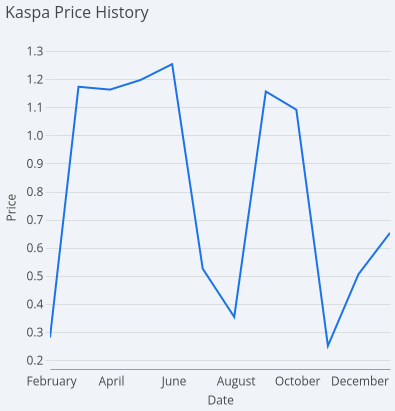
As of the latest data 7th June, the live price of Kaspa (KAS) is $0.176, with a 24-hour trading volume of $204,337,666. The cryptocurrency has experienced a dynamic market presence, with fluctuations that reflect both investor sentiment and broader market trends.
Current Market Position
Kaspa’s current price positions it as a noteworthy player in the crypto market. It has seen a significant increase in value over the past year, indicating a growing interest from investors and traders alike.
Recent Performance
In the last 24 hours, Kaspa’s price has seen a change, indicative of the volatile nature of the cryptocurrency markets. This volatility is not uncommon and is often influenced by global economic events, market news, and technological developments within the Kaspa ecosystem.
Historical Milestones
Kaspa reached an all-time high of $0.1894 three months ago, showcasing its potential during peak market conditions. Conversely, its all-time low was recorded two years ago at $0.0001699, which underscores the remarkable growth trajectory Kaspa has undergone since its inception.
Market Sentiment
The market sentiment around Kaspa is cautiously optimistic, with analysts keeping a close eye on its technological advancements and adoption rates. The integration of Kaspa into payment gateways and its listing on various exchanges has contributed to its credibility and visibility in the crypto space.
Future Outlook
Investors are advised to monitor Kaspa’s performance closely, as its innovative technology and potential use cases could lead to increased demand and price appreciation. However, like all investments, potential risks should be carefully considered, and a diversified portfolio is recommended to mitigate market volatility.
Businesses are beginning to recognize the advantages of Kaspa for payments. NOWPayments, a payment gateway, has integrated Kaspa, allowing merchants to accept KAS payments. This adoption signifies Kaspa’s growing presence in the digital economy and its potential to streamline transactions with its fast and secure network.
Kaspa is making strides in the DeFi space by being listed on several DEXs. Users can trade Kaspa on platforms like StealthEX, Simple Swap, RocketX, and changeNOW, which offer a variety of trading pairs. This listing on DEXs demonstrates Kaspa’s compatibility with the ethos of decentralized finance, providing users with more control over their trades.
The Kaspa community is vibrant and actively engaged in various projects. One such initiative is KaspaFunding, which focuses on decentralized ASIC mining and community-driven funding. This project aims to empower the community and support charitable causes, showcasing the collaborative spirit of Kaspa’s ecosystem.
Developers are at the heart of Kaspa’s growth, with a dedicated team working on its core technology. The Rust rewrite of Kaspa’s codebase is a testament to the active development and innovation happening within the project. This overhaul aims to enhance the efficiency, scalability, and reliability of the Kaspa network. Additionally, the Kaspa roadmap indicates ongoing efforts to create user-friendly wallets and expand the ecosystem, further encouraging developer adoption.


![DeBank and How It Works [Full Guide]](https://www.theonlinecryptocurrency.com/blog/wp-content/uploads/2024/06/images-39-150x150.jpeg)
